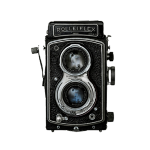Long Exposure Calculator
Calculate exposure times when using neutral density (ND) filters
About Long Exposure Photography
Long exposure photography creates stunning images with motion blur effects in water, clouds, and moving subjects. Neutral Density (ND) filters reduce the light entering your camera, allowing for longer exposure times even in bright conditions.
This calculator helps you determine the correct exposure time when using ND filters of various strengths. Simply enter your base exposure settings (without the filter) and select your ND filter to calculate the new exposure time.
Use this tool to plan your long exposure shots for creating silky smooth waterfalls, misty seascapes, or dreamy cloud movements.
Note: This calculator provides theoretical exposure times based on mathematical calculations. Actual results may vary due to:
- Filter manufacturing tolerances
- Light intensity changes during long exposures
- Camera metering variations
- Reciprocity failure in some cameras during very long exposures
Always take a test shot and adjust as needed for your specific equipment and conditions.
Long Exposure Photography Tips
Planning Your Shot
- Scout locations in advance and check weather conditions
- Arrive early to set up before the best light
- Bring a flashlight for adjusting camera settings in low light
- Consider using an app to calculate blue hour and golden hour times
Equipment Essentials
- Sturdy tripod (essential for long exposures)
- Remote shutter release or intervalometer
- Extra batteries (long exposures drain batteries faster)
- Microfiber cloth for keeping filters clean
- Step-up/step-down rings if needed for filter mounting
Camera Settings
- Use Manual (M) or Bulb mode for exposures over 30 seconds
- Set your camera to its base ISO (typically 100) for minimal noise
- Use mirror lock-up to reduce vibration (for DSLR cameras)
- Disable image stabilization when using a tripod
- Consider enabling long exposure noise reduction for very long exposures
Subject-Specific Advice
- Water: 1-5 seconds for flowing streams, 30+ seconds for misty water effects
- Clouds: 30+ seconds to capture cloud movement
- Light Trails: 10-30 seconds in urban environments
- Star Trails: Multiple exposures of 30 seconds to several minutes
- Architecture: Use long exposures to remove people from busy locations
Exposure Effects Guide
Different exposure times create different effects in your images. Here's a quick guide to help you plan your shots:
Water
- 1/15 sec: Slight motion blur, texture still visible
- 1/4 - 1 sec: Silky water effect begins
- 2-5 sec: Smooth flowing water, some texture
- 10-30 sec: Misty, ethereal water effect
- 1-4 min: Water becomes fog-like, completely smooth
Clouds
- 10-30 sec: Subtle cloud movement
- 30 sec - 2 min: Noticeable cloud stretching
- 3-10 min: Dramatic cloud streaking across sky
Urban/Light Trails
- 2-5 sec: Single vehicle light trails
- 10-30 sec: Multiple light trails, people disappear
- 1-5 min: Highways become rivers of light
